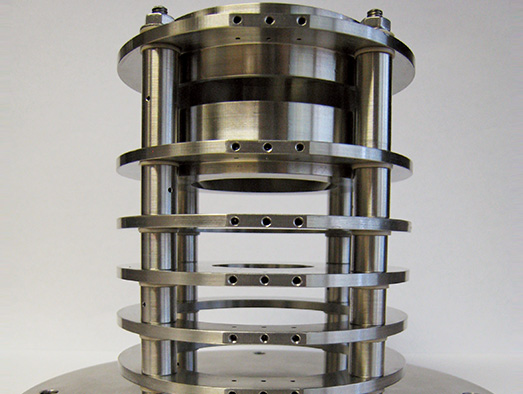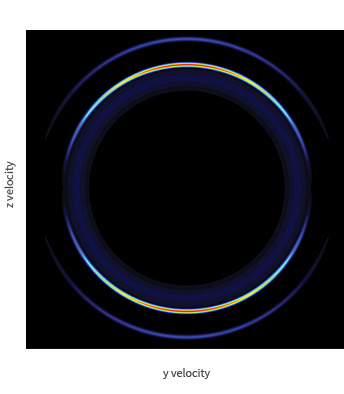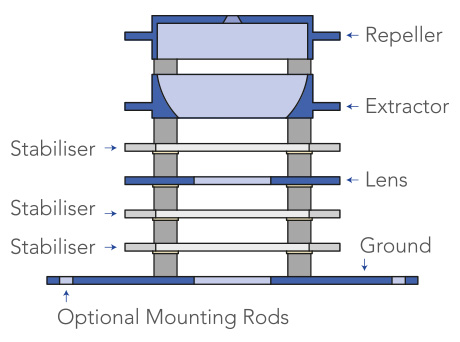

Velocitas VMI DOUBLE PRIME
DOUBLE PRIME was designed in partnership with Prof Mike Ashfold and his research group at the School of Chemistry, University of Bristol. The ion optics have been used in experiments involving the photodissociation of small molecules, with the benefit of dc slicing for improved data analysis.
DOUBLE PRIME's advanced design offers a higher velocity resolution and increased ionisation volume compared to standard VMI ion optics. DOUBLE PRIME has an optimally-shaped Repeller and Extractor, an annular Lens and additional stabilising electrodes for ultimate velocity mapping field definition. The state-of-the-art DOUBLE PRIME further offers the capability of dc slicing under standard velocity mapping conditions, negating the need for complex reconstruction algorithms to obtain energy and angular distribution information.
DOUBLE PRIME has been used in different laboratories, including the laser laboratory at the School of Chemistry, University of Bristol, with proof of concept experiments including one and two colour REMPI of diatomic molecules in state-selected imaging investigations. DOUBLE PRIME offers very high velocity resolutions approaching 1% limited mainly by inherent properties of the molecular beam.
As with all the Velocitas VMI ion optics, DOUBLE PRIME comes with configurable options including: Optional flight tube and mu-metal shielding, choice of mounting options and compatibility with a selection of detector sizes and vacuum chamber configurations.
Contact us to discuss your needs >

Above: Reconstructed slice image from VMI of Br from photodissociation of IBr in Velocitas VMI DOUBLE PRIME.
The image shows a 2D slice through the reconstructed 3D recoil distributions of Br from one colour photodissociation of IBr at 260.61 nm, with recoil parallel to the laser's polarisation. The detector is gated to image the 79Br isotope, where there are two components to the signal; a slow and fast (weaker) component, attributed to the formation of ground state Br with spin-orbit excited I and ground state I, respectively.
The data was recorded with Velocitas VMI DOUBLE PRIME, with Repeller at 4.5 kV and a flight length of 460 mm.
With permission from University of Bristol.
